Abstract
A successive matching-to-sample procedure that entails the sequential presentation of sample and test stimuli and the monitoring of response rates in a go/no-go discrimination of matching and nonmatching stimuli was studied as an alternative to the familiar delayed-matching paradigm of animal short-term memory. Three within-subject experiments studied the effects of sample duration (1 to 12 seconds), intertrial interval (5 to 50 seconds), and retention interval (1 to 50 seconds) on the pigeon's successive-matching performance. The results revealed that retention was (a) an increasing function of sample duration and intertrial interval, and (b) a decreasing function of retention interval. These results were in accord with those of more traditional short-term memory paradigms, and reveal the suitability of the successive-matching procedure for studying memory processes.
Keywords: short-term memory, matching to sample, successive stimulus presentation, discriminative control, sample duration, intertrial interval, retention interval, key peck, pigeons
Full text
PDF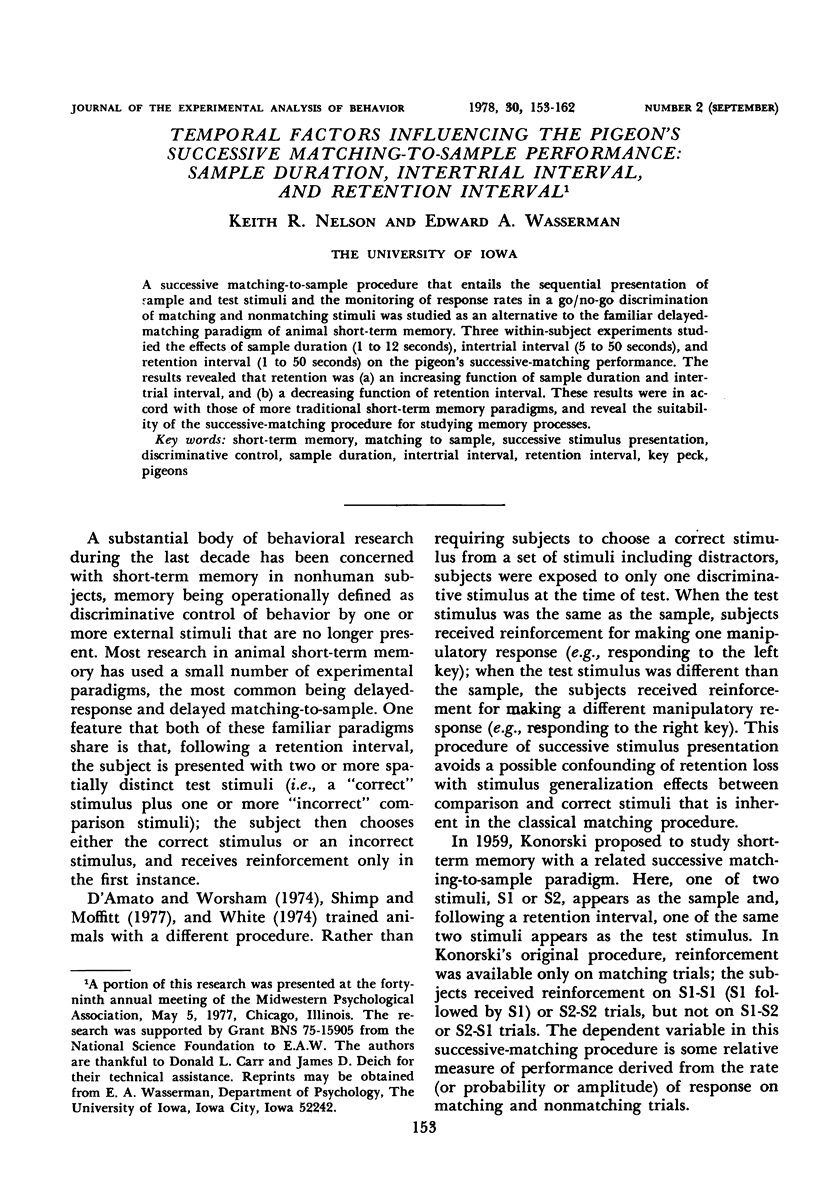
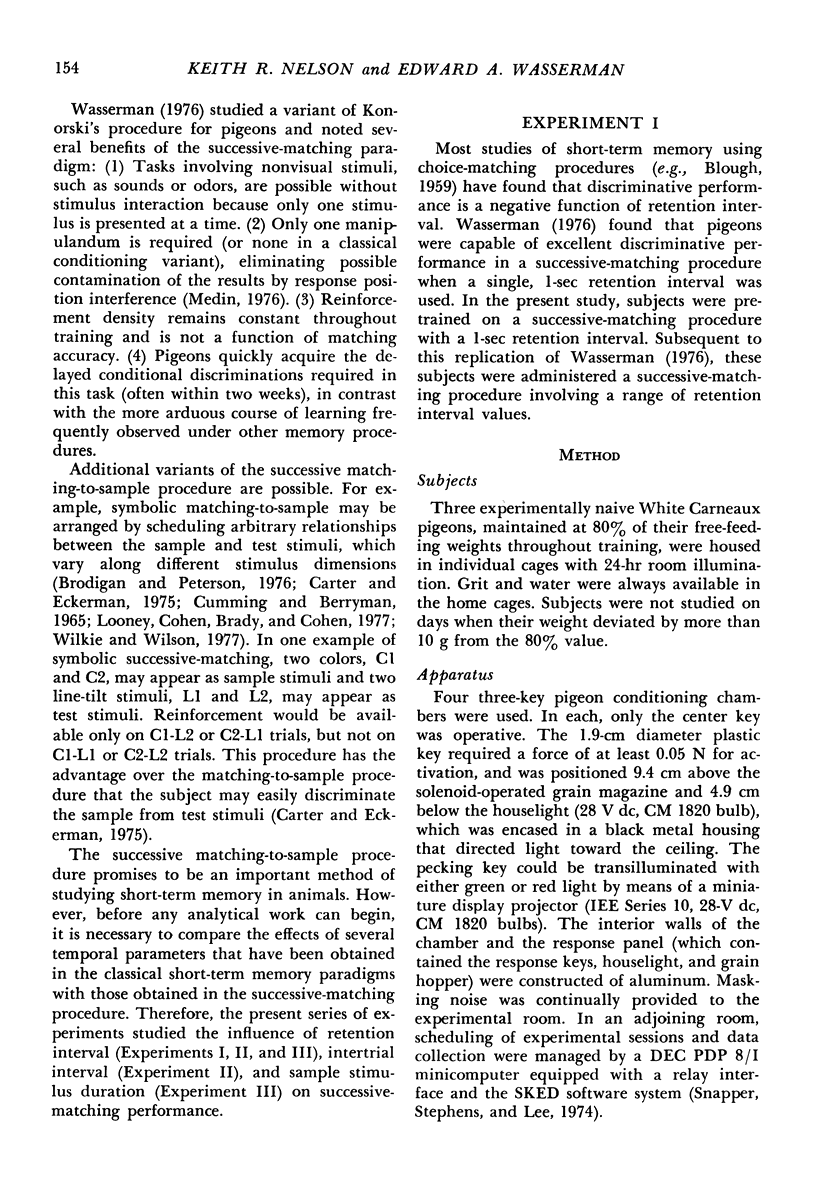
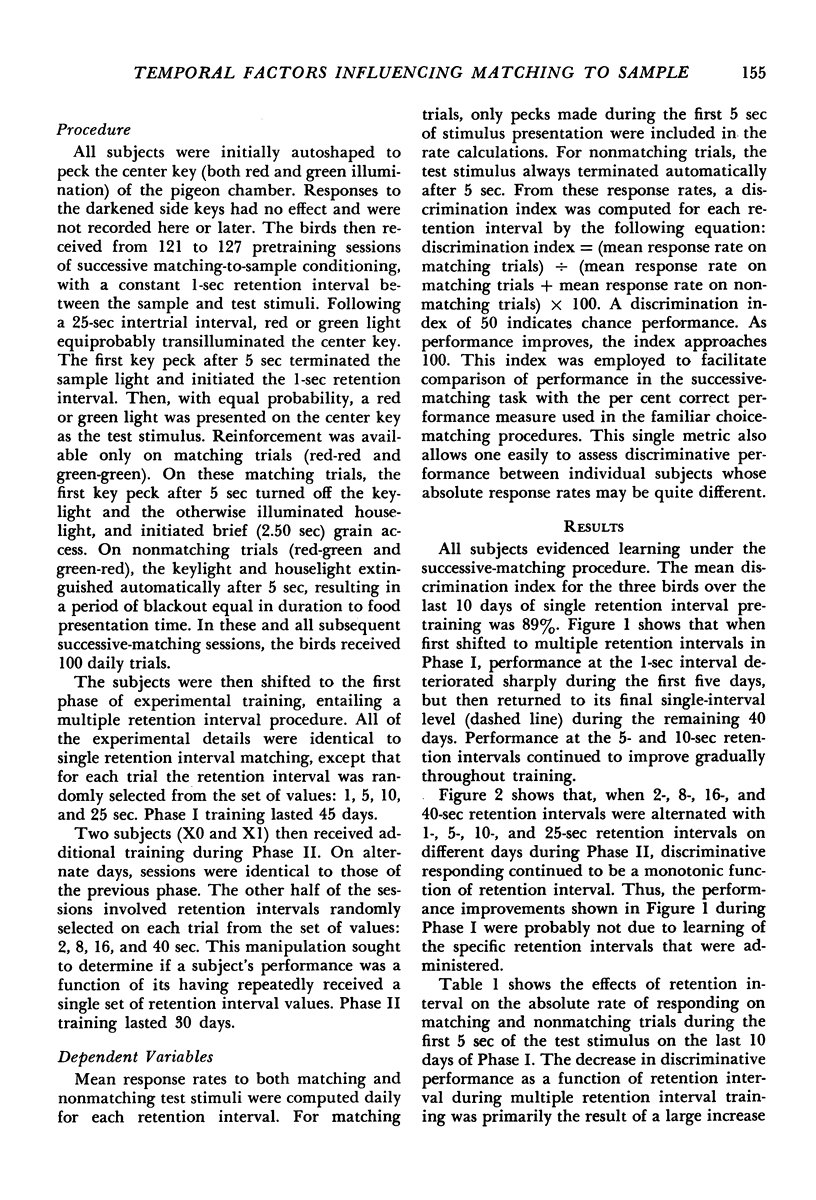
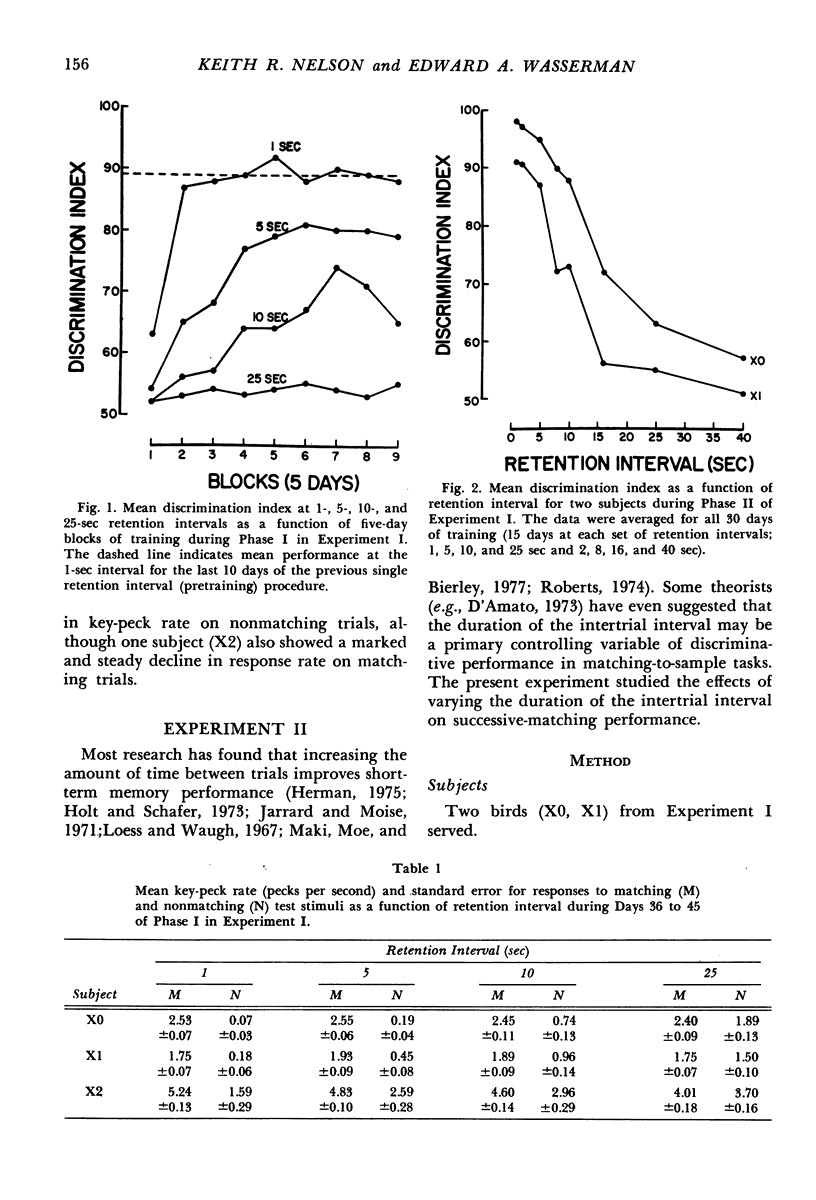
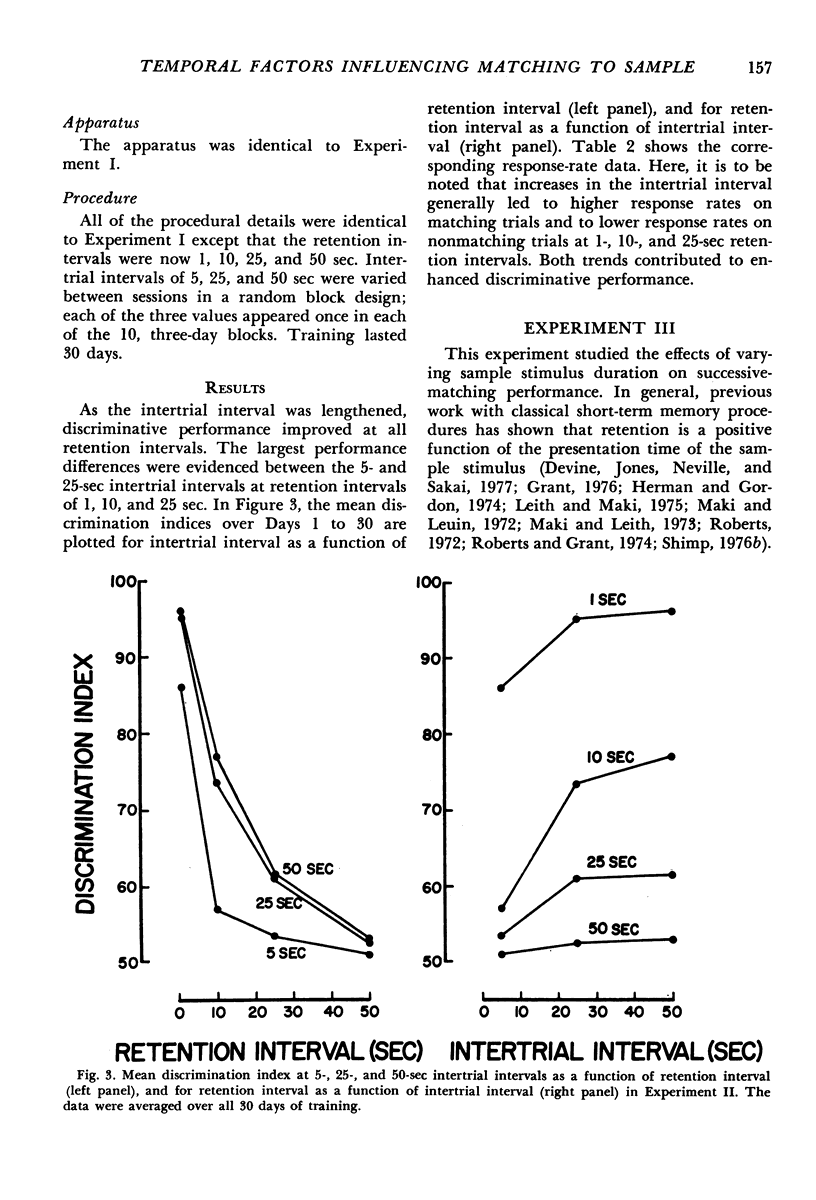
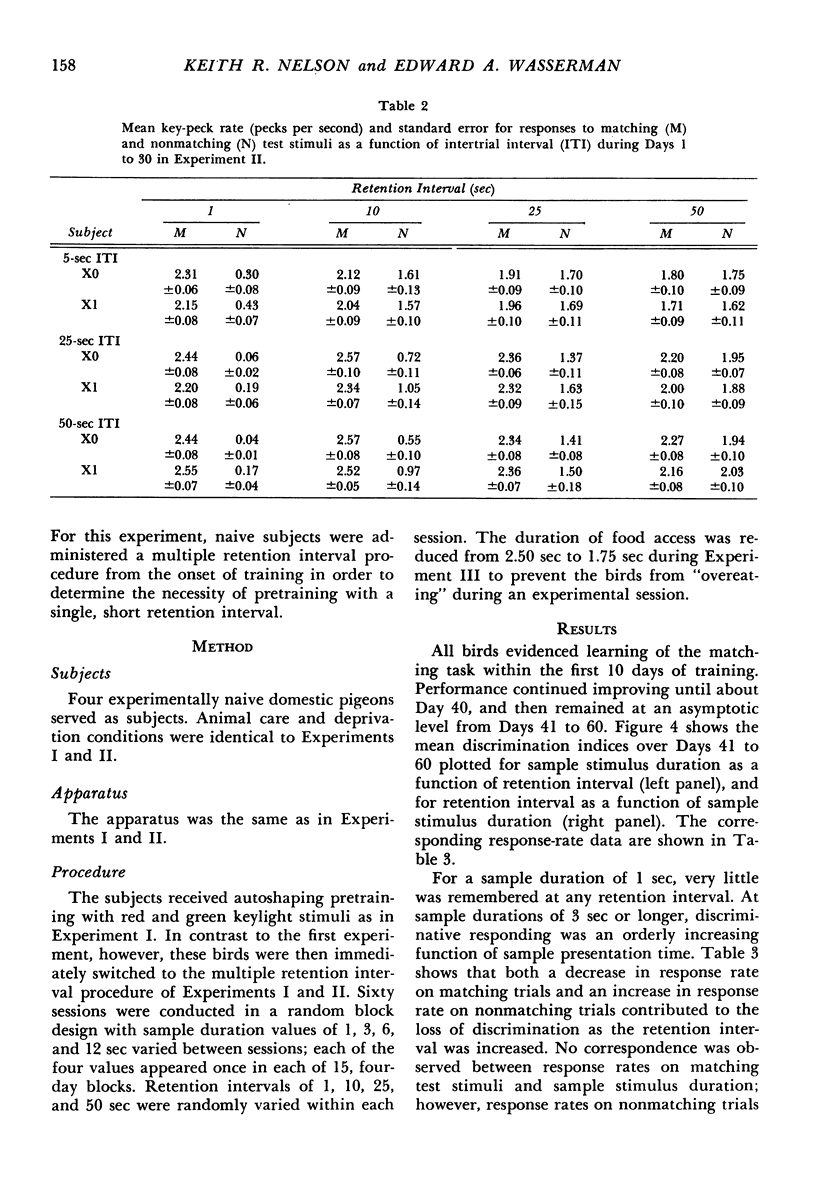
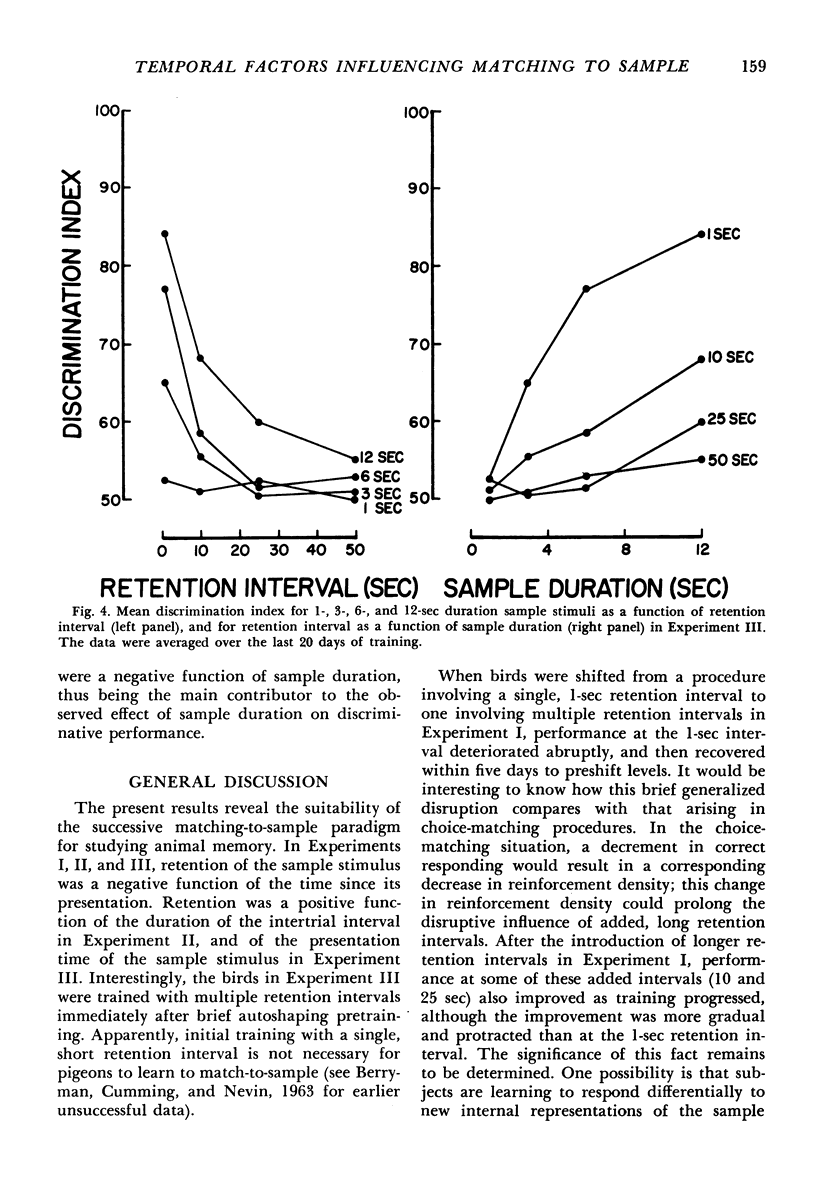
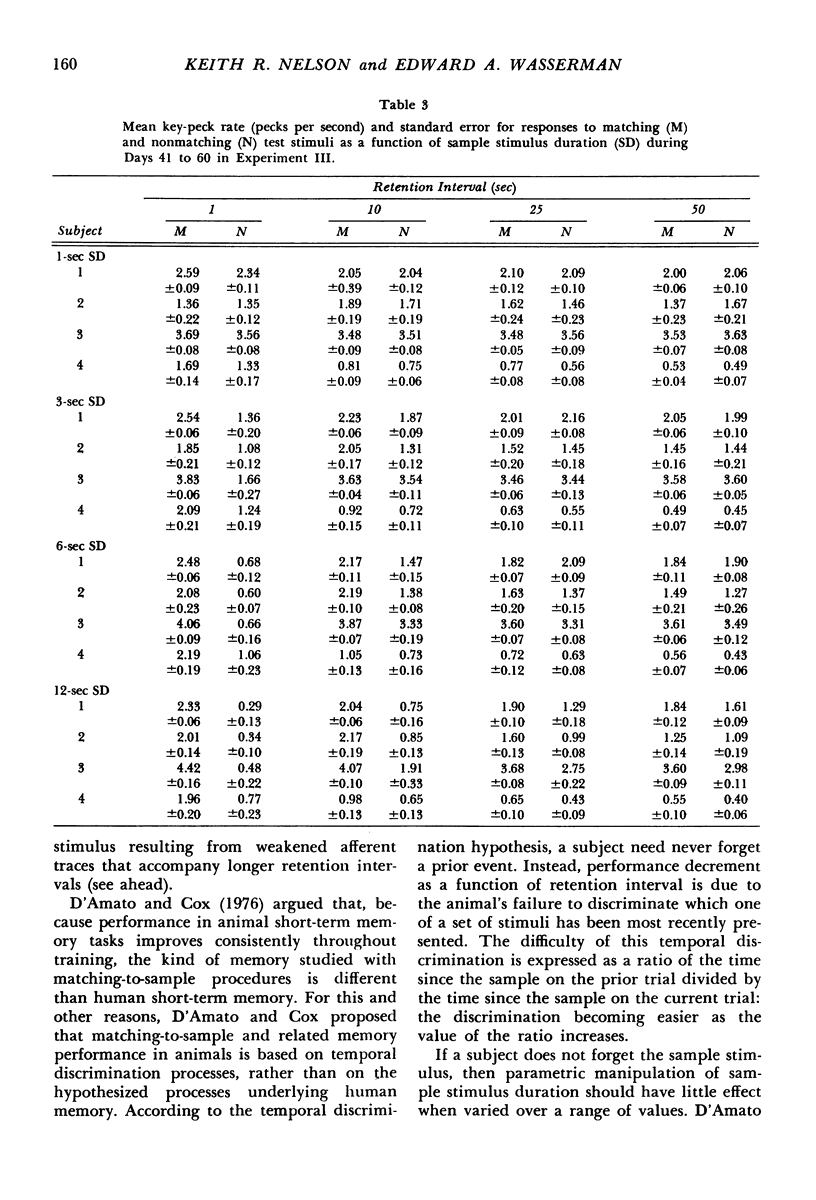
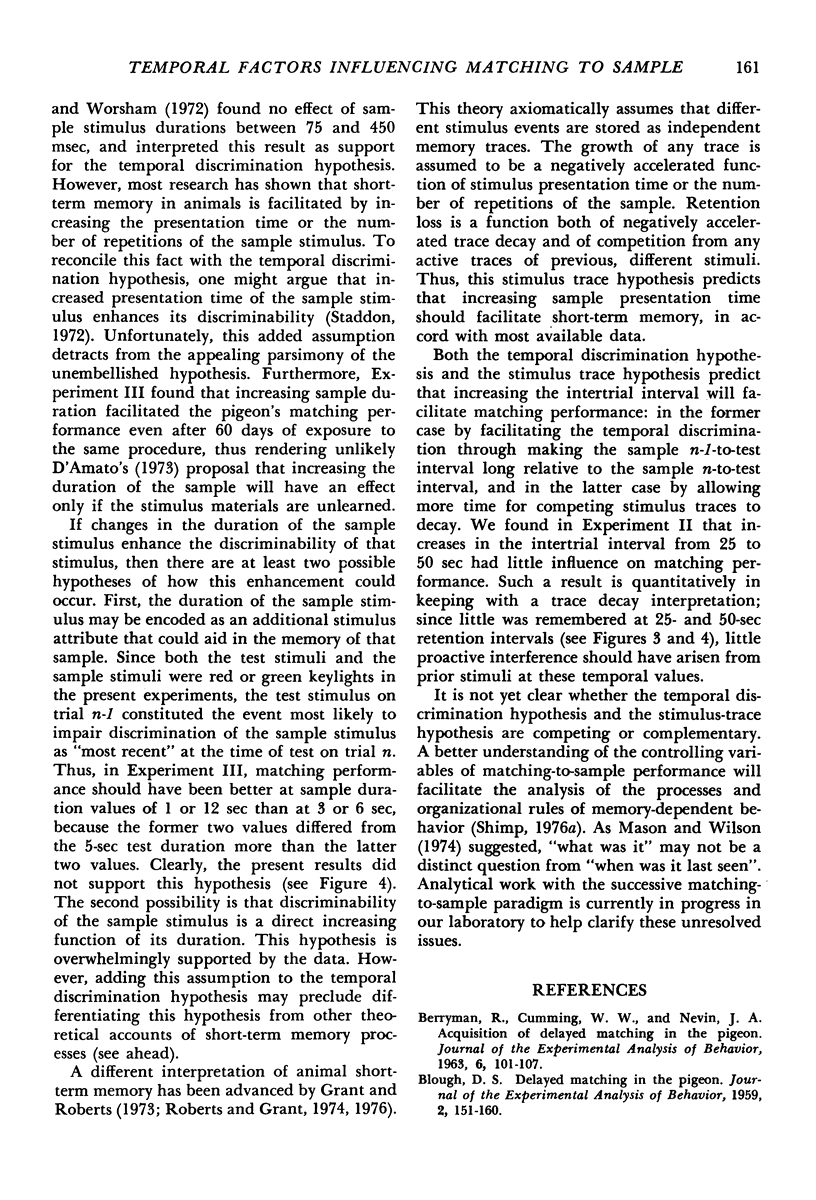
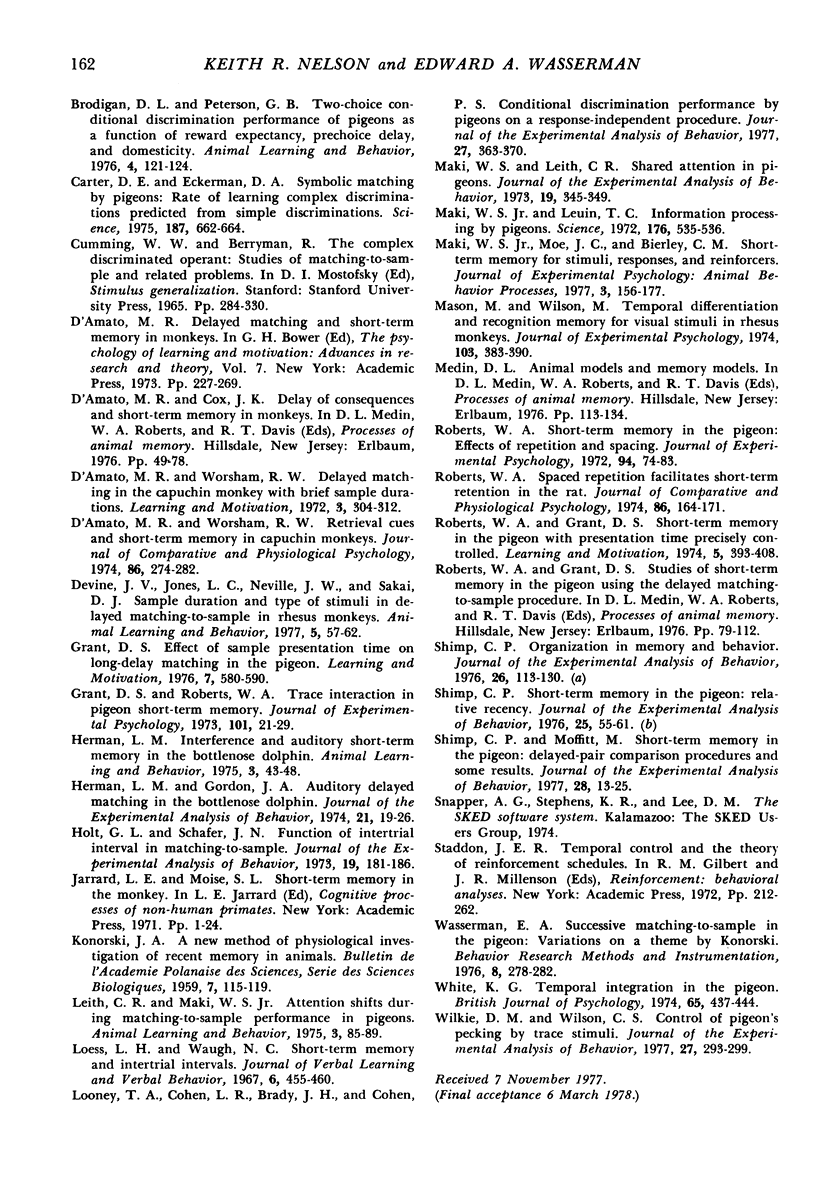
Selected References
These references are in PubMed. This may not be the complete list of references from this article.
- BLOUGH D. S. Delayed matching in the pigeon. J Exp Anal Behav. 1959 Apr;2:151–160. doi: 10.1901/jeab.1959.2-151. [DOI] [PMC free article] [PubMed] [Google Scholar]
- Berryman R., Cumming W. W., Nevin J. A. Acquisition of delayed matching in the pigeon. J Exp Anal Behav. 1963 Jan;6(1):101–107. doi: 10.1901/jeab.1963.6-101. [DOI] [PMC free article] [PubMed] [Google Scholar]
- Brodigan D. L., Peterson G. B. Two-choice conditional discrimination performance of pigeons as a function of reward expectancy, prechoice delay, and domesticity. Anim Learn Behav. 1976 May;4(2):121–124. doi: 10.3758/bf03214021. [DOI] [PubMed] [Google Scholar]
- Carter D. E., Eckerman D. A. Symbolic matching by pigeons: rate of learning complex discriminations predicted from simple discriminations. Science. 1975 Feb 21;187(4177):662–664. doi: 10.1126/science.1114318. [DOI] [PubMed] [Google Scholar]
- Herman L. M., Gordon J. A. Auditory delayed matching in the bottlenose dolphin. J Exp Anal Behav. 1974 Jan;21(1):19–26. doi: 10.1901/jeab.1974.21-19. [DOI] [PMC free article] [PubMed] [Google Scholar]
- Holt G. L., Shafer J. N. Function of intertrial interval in matching-to-sample. J Exp Anal Behav. 1973 Jan;19(1):181–186. doi: 10.1901/jeab.1973.19-181. [DOI] [PMC free article] [PubMed] [Google Scholar]
- Looney T. A., Cohen L. R., Brady J. H., Cohen P. S. Conditional discrimination performance by pigeons on a response-independent procedure. J Exp Anal Behav. 1977 Mar;27(2):363–370. doi: 10.1901/jeab.1977.27-363. [DOI] [PMC free article] [PubMed] [Google Scholar]
- Maki W. S., Jr, Leith C. R. Shared attention in pigeons. J Exp Anal Behav. 1973 Mar;19(2):345–349. doi: 10.1901/jeab.1973.19-345. [DOI] [PMC free article] [PubMed] [Google Scholar]
- Maki W. S., Jr, Leuin T. C. Information-processing by pigeons. Science. 1972 May 5;176(4034):535–536. doi: 10.1126/science.176.4034.535. [DOI] [PubMed] [Google Scholar]
- Mason M., Wilson M. Temporal differentiation and recognition memory for visual stimuli in rhesus monkeys. J Exp Psychol. 1974 Sep;103(3):383–390. doi: 10.1037/h0037233. [DOI] [PubMed] [Google Scholar]
- Shimp C. P., Moffitt M. Short-term memory in the pigeon: delayed-pair-comparison procedures and some results. J Exp Anal Behav. 1977 Jul;28(1):13–25. doi: 10.1901/jeab.1977.28-13. [DOI] [PMC free article] [PubMed] [Google Scholar]
- Wilkie D. M., Wilson C. S. Control of pigeons' pecking by trace stimuli. J Exp Anal Behav. 1977 Mar;27(2):293–299. doi: 10.1901/jeab.1977.27-293. [DOI] [PMC free article] [PubMed] [Google Scholar]


